
HPU2. Nat. Sci. Tech. Vol 02, issue 02 (2023), 11-21
HPU2 Journal of Sciences:
Natural Sciences and Technology
journal homepage: https://sj.hpu2.edu.vn
Article type: Research article
Received date: 26-6-2023 ; Revised date: 08-8-2023 ; Accepted date: 15-8-2023
This is licensed under the CC BY-NC-ND 4.0
Criteria for finite-time stability of singular large-scale discrete-
time delay systems
Thi-Huong Pham
a,*
, Huu-Du Hoang
b
, Hong-Ngoc Nguyen
b
a
Department of Mathematics, Ha Noi Pedagogical University 2, 32 Nguyen Van Linh, Phuc Yen, Vinh Phuc,
Vietnam
b
K46E, Department of Mathematics, Ha Noi Pedagogical University 2, 32 Nguyen Van Linh, Phuc Yen, Vinh
Phuc, Vietnam
Abstract
This paper concerns a problem of finite-time stability for a class of linear singular large-scale systems
with delays. Based on matrix transformations, Lyapunov function method combined with new
estimation techniques, we derive sufficient conditions for solving the finite-time stability of the
system. A numerical example is given to illustrate the validity and effectiveness of the theoretical
results.
Keywords: Schur’s complement lemma, finite-time stability, large-scale system, singular system.
1. Introduction
Currently, the research on the stability of dynamical systems has received attention and
development as an independent mathematical theory with numerous applications in scientific,
engineering, and economic fields ([2],[5],[18]). The concept of finite-time stability (FTS) is
independent to Lyapunov stability and was first introduced by Russian mathematicians ([9]),
appearing in Western journals in the 1960s ([3]). In comparison to Lyapunov stability- addresses the
behavior of a system over an infinite time interval, finite-time stability focuses on the boundedness of
a system within a fixed, generally short, time interval. Therefore, finite-time stability (FTS) is often
used to indicate when the state variables of a system do not exceed a given threshold within a short
time period, for example, preventing the system from reaching saturation or excitatory states in
nonlinear dynamical systems...
* Corresponding author, E-mail: phamthihuong@hpu2.edu.vn
https://doi.org/10.56764/hpu2.jos.2023.2.2.11-21

HPU2. Nat. Sci. Tech. 2023, 2(2), 11-21
https://sj.hpu2.edu.vn 12
Although the theory of Lyapunov stability for linear systems with delays has been extensively
developed over several decades, there are only a few results concerning the finite-time stability of
linear systems with delays ([1],[6],[10]),… Most of the research results have focused on linear systems
without delays or linear systems with delays but without singularity. In practice, studying the stability
problem and control stability (stabilization) of singular systems with delay is often more complex than
the nonsingular case due to algebraic constraints. Establishing the existence and uniqueness of
solutions for these problems is much more challenging compared to the nonsingular class of problems.
Moreover, delays themselves pose obstacles in the study of system stability. Therefore, the problem of
investigating the finite-time stability of the class of singular, time-delay control systems has attracted
considerable attention from mathematicians such as Myskist, Amato, Kharitonov, etc. In Vietnam,
professors Nguyen Khoa Son, Vu Hoang Linh, Pham Huu Anh Ngoc, Vu Ngoc Phat,.. and their
colleagues have also conducted research and obtained significant results ([4],[11],[15]).
Recently, there have been several published results on the stability analysis of large-scale systems
that have attracted the attention of mathematicians. Many real-world systems are modeled as large-
scale systems, such as power systems, communication systems, social systems, transportation systems,
and economic systems. Large-scale systems are systems that consist of numerous interconnected
subsystems in a tightly coupled and complex manner ([16]). The analysis of stability of large-scale
systems, especially singular large-scale systems with delays becomes more challenging not only due to
the high dimensionality of the systems but also because of the singularity and time-delay
characteristics of the systems under investigation. Some stability results for this class of systems have
been published, primarily focusing on Lyapunov stability (LS) ([12],[14],[17]). However, there are
very few studies on finite-time stability (FTS) for this class of systems, mainly limited to nonsingular
systems with constant delays or nonsingular systems with bounded time-varying delays ([13]). There
are few publications on the finite-time stability (FTS) of singular large-scale systems with delays.
Most recently, V. N. Phat and colleagues have published some results on the finite-time stability and
finite-time stabilization of singular, time-delayed large-scale systems in both continuous-time ([7]) and
discrete-time ([8]) cases.
With the development of digital computers, the theory of discrete systems plays a crucial role in
control theory. In practical systems, discrete-time systems often arise as a result of sampling
continuous-time systems, using available discrete data, or when computers are involved in the control
loop. Discrete-time systems are prevalent in social systems, time series analysis, and many other real-
world applications. Therefore, the study of finite-time stability and control problems for discrete
systems is highly relevant, especially for complex systems that model various real-world systems such
as large-scale systems. It is recognized that this is a topic of interest for many mathematicians
worldwide, including those in Vietnam. At the same time, there are still many open issues for us to
investigate. Building upon the results in [18] by Wu et al. for general discrete systems, we conducted a
study to establish conditions for the finite-time stability of complex singular, time-delayed large-scale
discrete systems.
The remainder of this paper is organized as follows: In Section 2, some preliminaries are given.
Criteria for finite-time stability of singular large-scale discrete-time delay systems are constructed in
Section 3. An illustrative example is contributed in Section 4 and finally, Section 5 is presented a
conclusion.

HPU2. Nat. Sci. Tech. 2023, 2(2), 11-21
https://sj.hpu2.edu.vn 13
2. Preliminaries
Consider a singular linear large-scale discrete system with delays of the form
1,
( 1) ( ) ( ), ,
( ) ( ), , 1,...0,
N
i i i i ij j ij
j j i
i i
E x k Ax k A x k k
x k k k
(1)
where 0; max{ }; ( )
i
n
ij ij i
x k
is the state;
i
E
is singular,
rank , 1, ;
i i
E r i N
,
i j
i i
n n
n n
i ij
A A
are given constant matrices; ( )
i
n
i
k
are the initial functions.
Definition 1 ([8])
(i) Large-scale system (1) is said to be regular if
det( )
i i
sE A
is not identical zero, for
1,
i N
, for some
s
.
(ii) Large-scale system (1) is said to be causal if
deg(det( )) rank ; 1,
i i i i
sE A r E i N
,
for some
s
.
As shown in [8], the regularity and causality of
( , ), 1,
i i
E A i N
, guarantee the existence and
uniqueness of solutions of system (1) under admit initial condition (.)
i
n
i
.
Let us set
1 1 1
diag{ ,..., }, ( ) col{ ( ),..., ( )}, ( ) col{ ( ),..
., ( )}.
N N N
R R R x k x k x k t k k
Definition 2 (Finite-time stability-FTS) The system (1) is finite-time stable with respect to
1 2 1 1 2
( , , , ,..., )(0 , 0, 0, 1, )
N i
c c T R R c c T R i N
, if it is causal, regular and
1 2
,...,0
max { ( ) ( )} ( ) ( ) , 0,..., .
k
k R k c x k Rx k c k T
The aims of this paper are to find some sufficient conditions which guarantee the system (1) is
regular, causal and state bounded over the finite interval
[0, ]
T
. We present the following propositions
which will be used in the proof of the further results.
Proposition 1 (Cauchy matrix inequality [18]) For given
,
n
a b
, we have
1
2
a b a Ra b R b
,
where
R
is a positive symmetric defined matrix.
Proposition 2 (Schur complement lemma [18]) For U, V, Q, where
0,
V V U U
are
given matrices, we have
1
0 0 0.
V Q
U Q
U Q V Q or
Q V Q U

HPU2. Nat. Sci. Tech. 2023, 2(2), 11-21
https://sj.hpu2.edu.vn 14
3. Main result
In this section, some sufficient conditions for FTS will be established based on the LMI approach
for system (1). We define the following matrix notations:
,
,
, 1
,
, 1
( 1) ( ) ( ) ;
( ) ; 1,..., 1, 1,..., ;
( ) ;
; 1,..., 1, 1,..., ;
; 1,...
i
i i i i i i i i i
i
i k i ik i i i ik
i
i N i i i i i i
i
k k k ik i ik ik i ik
i
k N ik i ik i
N Q X A E A E X
X A A E Z A k i i N
E P A E Y X
Q A Z A A Z A k i i N
A Y A Z k
1, 1
1, 1
,
,
,
;
1, 1,..., ;
; 2,..., 1, 1,...
on the oth
;
, ;
;
; , 2,..., 1, 1,.
e
.
c
., ;
er as s0
i
k i i ik
i
N N i i i
i
j k ij i ik
i
j k
i i N
A Z A k i i N
P Y Y
A Z A j k j k i i N
max max max
1, 1, 1,
min min min
max 1 max ; max .
i i i i i
i N i N i N
i i i
E PE Q R
g N
R R Q
In the following theorem, we will present the regulary, causality and FTS of the system (1).
Theorem 1 (Finite-time stability) Let 1 2
, ,
c c T
be positive numbers,
0
i
R
be given symmetric
matrices for all
1,
i N
. The large-scale system (1) is finite-time stable 1 2
( , , , )
. .
w r
c T
t
c R
if there
are matrices
,
i i
X Z
, symmetric matrices
, , 0, 1,
i i i
P Y Q i N
, and a scalar
0
such that
, ,1 , 1 , 1 , , 1
1,1 1, 1 1, 1 1, 1, 1
1, 1 1, 1 1, 1, 1
1, 1 1, 1, 1
1, 1
i i i i i i
i i i i i i i i N i N
i i i i i
i i N N
i i i i
i i i i i N i N
i
i i i
i i i N i N
i
N N
0,
(2)
1
1 2
(1 ) .
T
gc c
(3)
Proof. First, we prove the regularity and causality of the system. From LMI (2) we obtain that
, , 1
1, 1
0.
i i
i i i N
i
N N
(4)
Since
rank
i i i
E r n
, from [18], there exists the matrices
( )
i i i
n n r
i
N
satisfying
0
T
i i
N E
and
rank
i i i
N n r
for all
1,
i N
. Leting

HPU2. Nat. Sci. Tech. 2023, 2(2), 11-21
https://sj.hpu2.edu.vn 15
0 0 0 0
; ; ;
0 ( ) 0
i
ii
i
i i i i
E I
E A P
E A E I P
( 1) 0 0 0
; ; ;
0 0 0 0
i i i
i
i i
i
N Q N X
Q N X
IY
Then, (4) is equivalent to
0.
T T T T
i
i i i i i i i i i i i i
X N A A N X Q E P P E P
We can see that
0
i
P
, which gives
0.
T T T T
i i i i i i i i i i
X N A A N X E P P E
(5)
Since rank rank
i i i i
E E r n
, there exist nonsingular matrices
i
M
and
i
G
satisfying
0
0 0
i
r
i i i
I
M E G
. And since
0
T
i i
N E
we have 0
0
0
0 0
0
T
Ti
i
i i
E
N
N E I
or
1 1 0
0
0 0
i
T T r
i i i i i i i
I
N M M E G N M
. So, we can set
11 12 11 12 1
21 22 21 22 2
0
, ; ; ,
i i i i i
T
i i i i i
i i i i i i i i i i i
A A P P X
M AG M PG G X M N K
I
A A P P X
where
i
K
are appropriately dimensioned nonsingular matrices. Multiplying by
i
G
and
i
G
on the left
and on the right of LMI (5), repectively, we obtain
1 22 21 2 12
1,1
2 22 22 2
0.
i i i i i
i
i i
ii i i i
i i
X K A A K X P
X K A A K X
Applying the Schur complement lemma, we obtain 2 22 22 2
0,
i i i i
i i
X K A A K X
which
gives 22
det 0
i
A
for all
1,
i N
. Hence, pair
,
i i
E A
, by [2, 18], is regular and causal.
Furthermore, we know that
det( ) det( )
i i i i
sE A sE A
. Hence,
det( )
i i
sE A
is not identical
zero, or system (1) is regular and causal.
Next, we will show that large-scale system (1) is stable. To the end, we propose the following


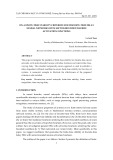

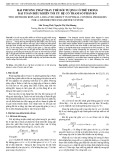

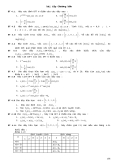
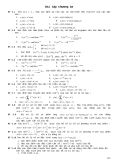
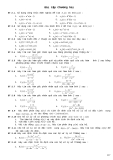














![Quyển ghi Xác suất và Thống kê [chuẩn nhất]](https://cdn.tailieu.vn/images/document/thumbnail/2025/20251030/anh26012006/135x160/68811762164229.jpg)
